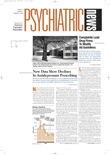Distant prayer and the bedside use of music, imagery, and touch (MIT therapy) did not have a significant effect upon the primary clinical outcome in patients undergoing certain cardiac procedures.
That was the finding from a multicenter trial by researchers at Duke University Medical Center, the Durham Veterans Affairs Medical Center (VAMC), and seven other academic medical institutions. Their report appears in the July 16 Lancet.
As part of the Monitoring and Actualization of Noetic Trainings (MANTRA) II study, 748 patients with coronary artery disease who were to undergo percutaneous coronary intervention or elective cardiac catheterization were randomized equally to each of the two noetic therapies or standard care.
(Noetic interventions such as prayer and MIT therapy are defined as“ an intangible healing influence brought about without the use of a drug, device, or surgical procedure,” according to the researchers.)
One group (189 patients) received both off-site intercessory prayer and MIT therapy, a second group (182 patients) received off-site intercessory prayer only, a third group (185 patients) received MIT therapy only, and the fourth group (192 patients) received neither the intercessory prayer nor the MIT therapy.
The prayer portion of the randomization was double blinded, while the MIT portion of the study was not. The primary endpoint was combined in-hospital major adverse cardiovascular events and six-month readmission or death. Secondary endpoints were subsets of the primary endpoint—six-month major adverse cardiovascular events, six-month death or readmission, and six-month mortality.
The researchers found no significant differences among the treatment groups in the primary composite endpoint. However, a secondary endpoint—six-month mortality—was slightly lower (but did not meet statistical significance) in patients assigned bedside MIT, with the lowest absolute death rates observed in patients treated with both prayer and bedside MIT (also not meeting statistical significance). Patients treated with bedside MIT also showed significantly less preprocedural distress in self-rated emotional distress prior to catheterization and stenting, according to the researchers.
MIT therapy was performed for 40 minutes at the patient's bedside after enrollment but before the coronary procedure by a practitioner“ certified in Level 1 healing touch,” according to the report. The patient was taught relaxed abdominal breathing, chose a preferred place image (defined as the most beautiful, peaceful place he or she had ever been), and selected a musical preference (easy listening, classical, or country music). After the imagery script, the practitioner applied 21 healing-touch hand positions, each for a period of 45 seconds. The patient then had the option of wearing headphones with musical background during the coronary procedure.
The first MANTRA study suggested that noetic therapies can reduce pre-procedural distress and might affect clinical outcome. That study appeared in the November 2001 American Heart Journal.
“While it's clear there was no measurable impact on the primary composite endpoints of this study, the trends and behavior of prespecified secondary outcome measures suggest treatment effects that can be taken pretty seriously when considering future study directions,” said Mitchell Krucoff, M.D., an interventional cardiologist at Duke and the study's lead researcher.
The enrollment sites included Durham VAMC, Duke University Hospital, Washington Hospital Center, Scripps Center for Integrative Medicine, Scripps Mercy Hospital, Florida Cardiovascular Research Group, Abbott Northwestern Hospital, Geisinger Medical Center, and Columbia University-New York Presbyterian Hospital.
Funding was provided by grants from the RAMA Foundation, Bakken Family Foundation, George Family Foundation, FACT Foundation, Duke University Heart Center, Duke Clinical Research Institute, Columbia University Medical Center, Geisinger Medical Center, Scripps Clinic, and the Institute of Noetic Sciences.
“Music, Imagery, Touch, and Prayer as Adjuncts to Interventional Cardiac Care: The Monitoring and Actualisation of Noetic Trainings (MANTRA) II Randomised Study” is posted at<www.thelancet.com/journals/lancet/article/PIIS0140673605669103/fulltext>.▪
